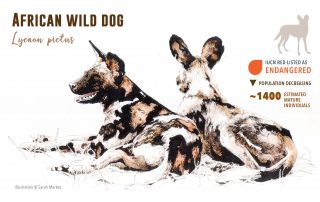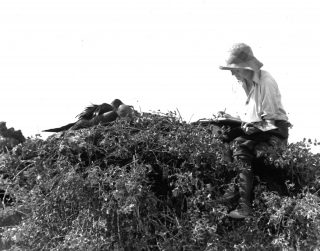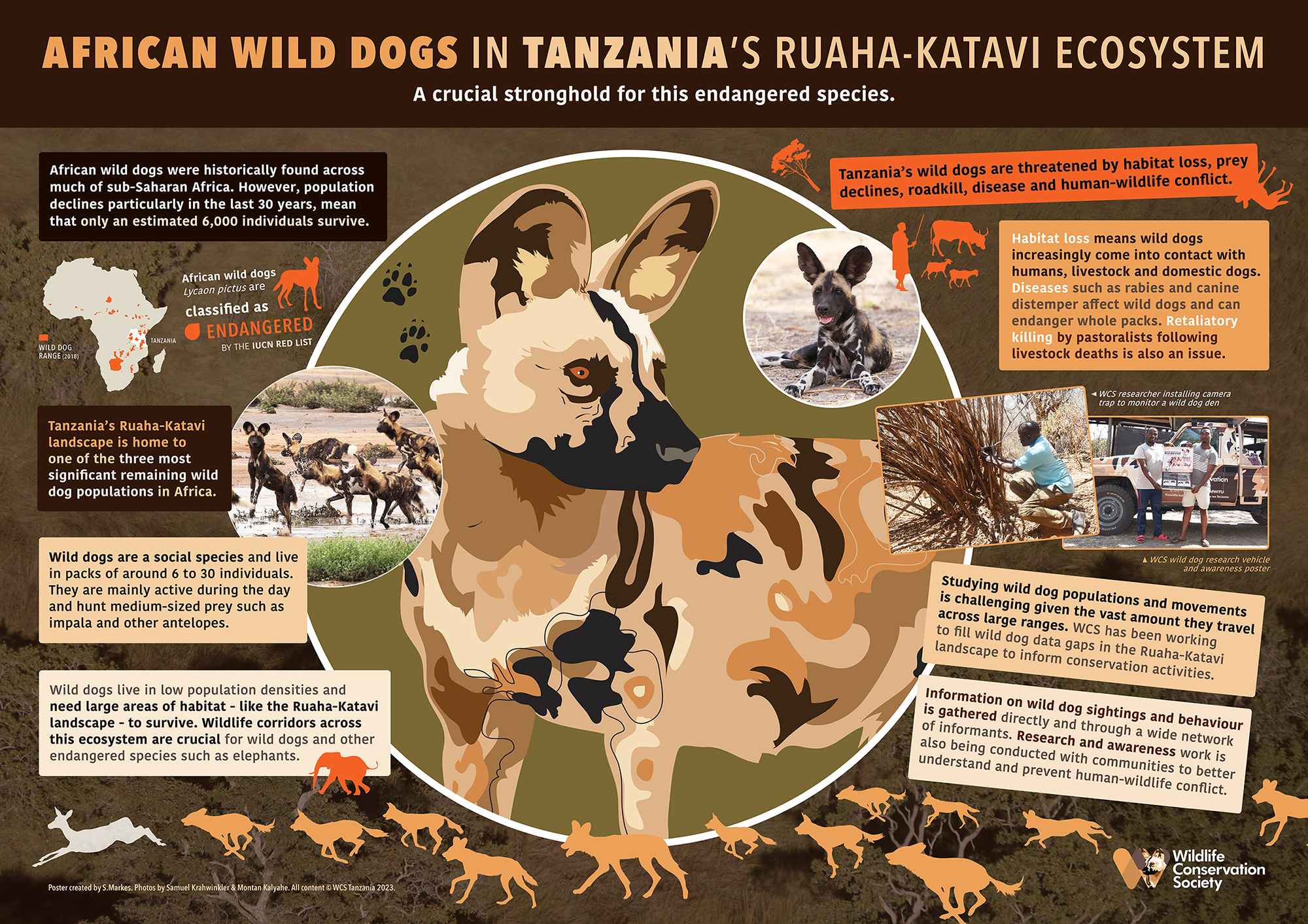
April 4, 2023
Wild Dog Research and Conservation
- as seen by -
 Sarah Markes
Sarah Markes
Tanzania’s Ruaha-Katavi landscape is one of the largest intact savannah ecosystems in Africa. Nearly three times the size of Switzerland, it extends from wooded plains and forested highlands to swamps and grassy wetlands. These habitats provide crucial refuge for many endangered species including elephants, lions, leopards, vultures, and African wild dogs. The eastern portion of the landscape is dominated by the Great Ruaha River – a vital source of water and hydroelectric power for millions of people. The Wildlife Conservation Society has been working to conserve this vast landscape and its wildlife for many years, with a focus on supporting core protected areas, safeguarding wildlife corridors, improving natural resource management, and strengthening law enforcement. This is underpinned by scientific research, monitoring, community-based conservation, and environmental education.
One of WCS’s current research priorities is to establish much-needed information on Ruaha-Katavi’s wild dog population. The species is classified as Endangered by the IUCN Red List of Threatened Species given the drastic reduction in their numbers in recent years caused by habitat loss, prey reduction, disease, human-wildlife conflict, and roadkill. Only around 6,000 wild dogs are thought to survive, with Ruaha-Katavi being a key stronghold for the species. Living in low population densities and being highly mobile across large areas means wild dogs are challenging to study. Yet, information on their numbers, distribution, health, and ecology is essential to inform their conservation. WCS has been working to fill some of these knowledge gaps and following previous research in Ruaha National Park, recently completed a status survey covering seven protected areas and 34 villages. Data collection included direct and indirect sightings, research into den location and usage, fecal sample collection to establish prey preferences, research into threats, and surveys with 340 households on their perceptions and experiences of wild dogs. Results are still being analyzed but seem to confirm Ruaha-Katavi as one of the three most significant remaining wild dog populations in Africa, along with Tanzania’s Nyerere-Selous ecosystem and Zimbabwe’s Hwange National Park. Insight gained from this study will be immensely helpful in informing conservation efforts.
This wild dog information poster was created for use in awareness efforts. PDF copies are available from sarahindar@gmail.com.




Leave a Comment